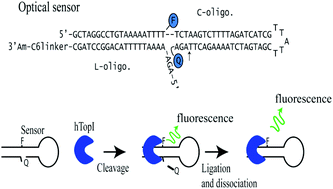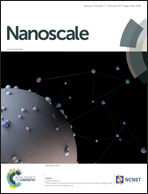Advantages of an optical nanosensor system for the mechanistic analysis of a novel topoisomerase I targeting drug: a case study†
Abstract
The continuous need for the development of new small molecule anti-cancer drugs calls for easily accessible sensor systems for measuring the effect of vast numbers of new drugs on their potential cellular targets. Here we demonstrate the use of an optical DNA biosensor to unravel the inhibitory mechanism of a member of a new family of small molecule human topoisomerase I inhibitors, the so-called indeno-1,5-naphthyridines. By analysing human topoisomerase I catalysis on the biosensor in the absence or presence of added drug complemented with a few traditional assays, we demonstrate that the investigated member of the indeno-1,5-naphthyridine family inhibited human topoisomerase I activity by blocking enzyme–DNA dissociation. To our knowledge, this represents the first characterized example of a small molecule drug that inhibits a post-ligation step of catalysis. The elucidation of a completely new and rather surprising drug mechanism-of-action using an optical real time sensor highlights the value of this assay system in the search for new topoisomerase I targeting small molecule drugs.



 Please wait while we load your content...
Please wait while we load your content...